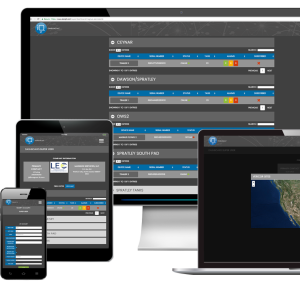Press Contact:
Uncategorized
What Are IOT Enabling Technologies? LEC Technologies Answers!
As surely we all know by now, the Internet of Things (IoT) is behind several innovations that have revolutionized the way we interact with the world around us. From smart homes to advanced industrial systems, IoT has become a driving force behind many innovations.
But, what is it exactly that makes the IoT work? The answer lies in number of IoT enabling technologies. These are essential tools and systems that allow IoT devices to connect, collect, and process data efficiently. Join us today as we take a deep dive into what IOT enabling technologies are, their applications, and the future trends shaping IoT.
What are IoT Enabling Technologies?
IoT enabling technologies refer to the systems, tools, and protocols which ensure that IoT devices can work together seamlessly. These technologies create a network of interconnected devices that gather, process, and share data in real time. Without them, the smart and automated world we have today wouldn’t be possible.
IoT enablement also involves deploying and managing IoT systems using these technologies. It ensures that devices communicate effectively, that data is processed efficiently, and that systems can scale as needed. Whether it’s for a well-known application such as the smart devices in our homes, or something with more of an industrial automation focus like the solutions LEC Technologies provides, IoT solutions rely on these technologies to operate efficiently.
Smart home systems, for example, use IoT enabling technologies to integrate thermostats, lights, and security systems into a cohesive network. In industrial IoT, an example might be these enabling technologies supporting predictive maintenance by monitoring machinery in real time, helping companies reduce downtime and improve productivity.
What are the Technologies that Enable IoT?
A variety of technologies make up the backbone of IoT systems. These include wireless sensor networks, cloud computing, big data analytics, embedded systems, communication protocols, and artificial intelligence. Let’s dive deeper into each.
Wireless sensor networks (WSNs)
These networks are crucial components of IoT systems. They consist of sensors distributed across a region to monitor conditions like temperature, humidity, and pressure. The sensors communicate wirelessly with a central system, providing real-time data for analysis. WSNs are scalable, energy-efficient, and reliable, making them ideal for applications in smart agriculture, healthcare, and environmental monitoring.
Cloud computing
Cloud computing provides the infrastructure needed to store, process, and analyze the massive amounts of data generated by IoT devices. Its scalability allows businesses to add resources as data volumes grow. Cloud platforms also offer flexibility, enabling users to access data and applications from anywhere. Because it’s involved in real-time data processing, IoT device management, and machine learning integration, cloud computing plays a vital role in IoT enablement.
Big data analytics
This is another essential IoT enabling technology. IoT devices can generate large datasets, and big data analytics helps extract actionable insights from this information. Key features include the ability to handle high volumes of data, to process it quickly, and to analyze a variety of data types. In industrial IoT deployments, big data analytics supports things like predictive maintenance, customer insights, and operational efficiency.
Embedded systems
These are specialized hardware and software setups designed to perform specific tasks within larger systems. These systems control IoT devices, enabling real-time operations, compact designs, and energy efficiency. Embedded systems are used in smart home devices, industrial automation, and wearable technology like fitness trackers.
Communication protocols
These are the languages that IoT devices use to exchange data. Standardized protocols ensure that devices from different manufacturers can communicate. Popular protocols include MQTT, CoAP, and Zigbee. These protocols are designed for low latency, interoperability, and energy efficiency, making them essential for seamless data exchange in IoT systems.
Artificial intelligence (AI) and machine learning
AI helps enhance IoT systems by enabling them to learn from data and improve over time. These technologies allow IoT systems to make intelligent decisions, predict future events, and automate tasks. Today, AI-powered IoT solutions are being used in smart cities to optimize traffic flow, in healthcare to assist with diagnoses, and in retail to personalize customer experiences.
Key Features of IoT Enabling Technologies
The various IoT enabling technologies have several essential features that make them valuable:
- Scalability: You can easily expand IoT systems by adding more devices.
- Interoperability: Devices from different manufacturers can work together.
- Real-Time Processing: Immediate analysis and response to data can be provided.
- Energy Efficiency: IoT devices consume minimal power, extending their operational life.
- Security: Data can certainly be protected from unauthorized access and ensure privacy.
Challenges in IoT Enablement
Implementing IoT solutions isn’t without its challenges. According to a report by McKinsey, the value potential of IoT could reach $5.5 to $12.6 trillion annually by 2030, but realizing this potential requires overcoming significant hurdles such as data security, scalability, and interoperability. One of the primary concerns affecting this is data security and privacy. IoT systems handle vast amounts of sensitive information, making them attractive targets for cyberattacks. As a result, ensuring data integrity and protecting user privacy are critical tasks for any IoT solution provider.
Scalability issues can also arise as the number of connected devices grows. Managing large-scale IoT deployments requires robust infrastructure and efficient resource allocation. Interoperability remains a challenge, as devices from different vendors may use varying communication protocols, leading to compatibility issues. Additionally, the vast amounts of data generated by IoT devices can lead to data overload, making it essential to have effective data management and processing strategies in place.
Future Trends
The future of IoT looks promising, with several emerging trends poised to shape its development. Edge computing is gaining traction as it reduces latency by processing data closer to the source. This approach minimizes the need to send data to centralized cloud servers, enabling faster decision-making.
The rollout of 5G networks will further enhance IoT connectivity by providing high-speed, low-latency communication. This will further enable real-time applications like autonomous vehicles and remote surgery. Blockchain technology is being explored for IoT security, offering decentralized and tamper-proof data management. Advanced AI and automation will continue to improve IoT systems’ decision-making capabilities and predictive accuracy.
Frequently Asked Questions (FAQs)
What are IoT enabling technologies, in brief?
These are the systems, tools, and protocols that allow IoT devices to communicate, collect data, and perform actions. They form the backbone of any IoT solution.
How do communication protocols ensure interoperability in IoT?
Communication protocols standardize how devices exchange data, ensuring they can communicate effectively regardless of the manufacturer.
What is the difference between edge computing and cloud computing in IoT?
Edge computing processes data locally at the source, while cloud computing processes data remotely in centralized data centers. Edge computing reduces latency, while cloud computing offers greater scalability.
How do sensors and actuators work in IoT systems?
Sensors collect data from the environment, while actuators perform actions based on that data. Together, they enable IoT devices to interact with their surroundings.
Conclusion
IoT enabling technologies are the backbone of our connected world, powering everything from smart homes to industrial automation. By understanding these technologies, businesses can unlock new opportunities, improve operational efficiency, and create smarter solutions.
At LEC Technologies, we pride ourselves on delivering advanced IoT solutions that leverage these enabling technologies. Whether you’re just starting with IoT or looking to scale your existing systems, we can help. Contact us today to learn more about how we can support you on your industrial IoT journey.
Need Help with Easier Industrial Solutions? We Are Experts!
We Are Experts in transforming industrial operations. Let's discuss how we can help your business achieve similar results.




